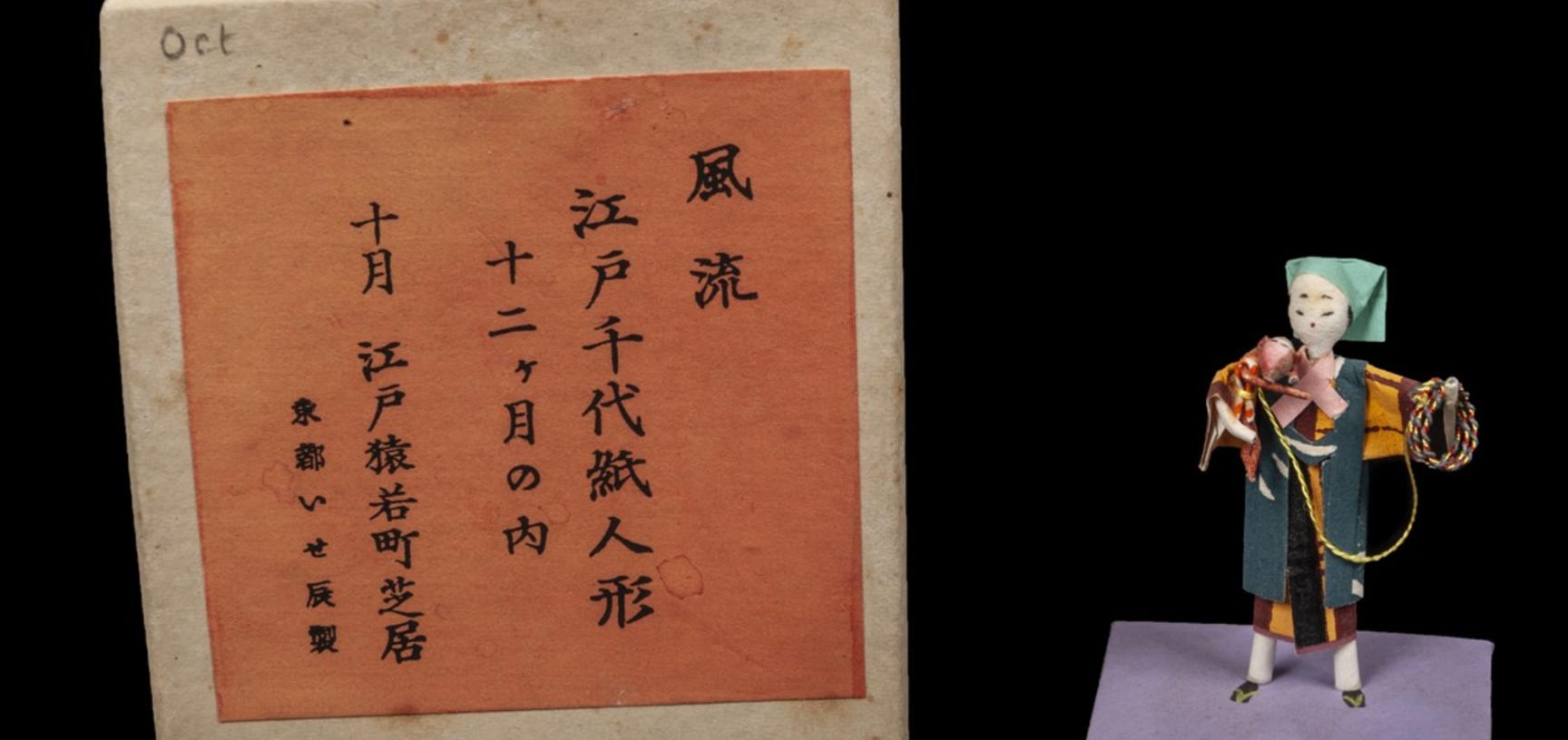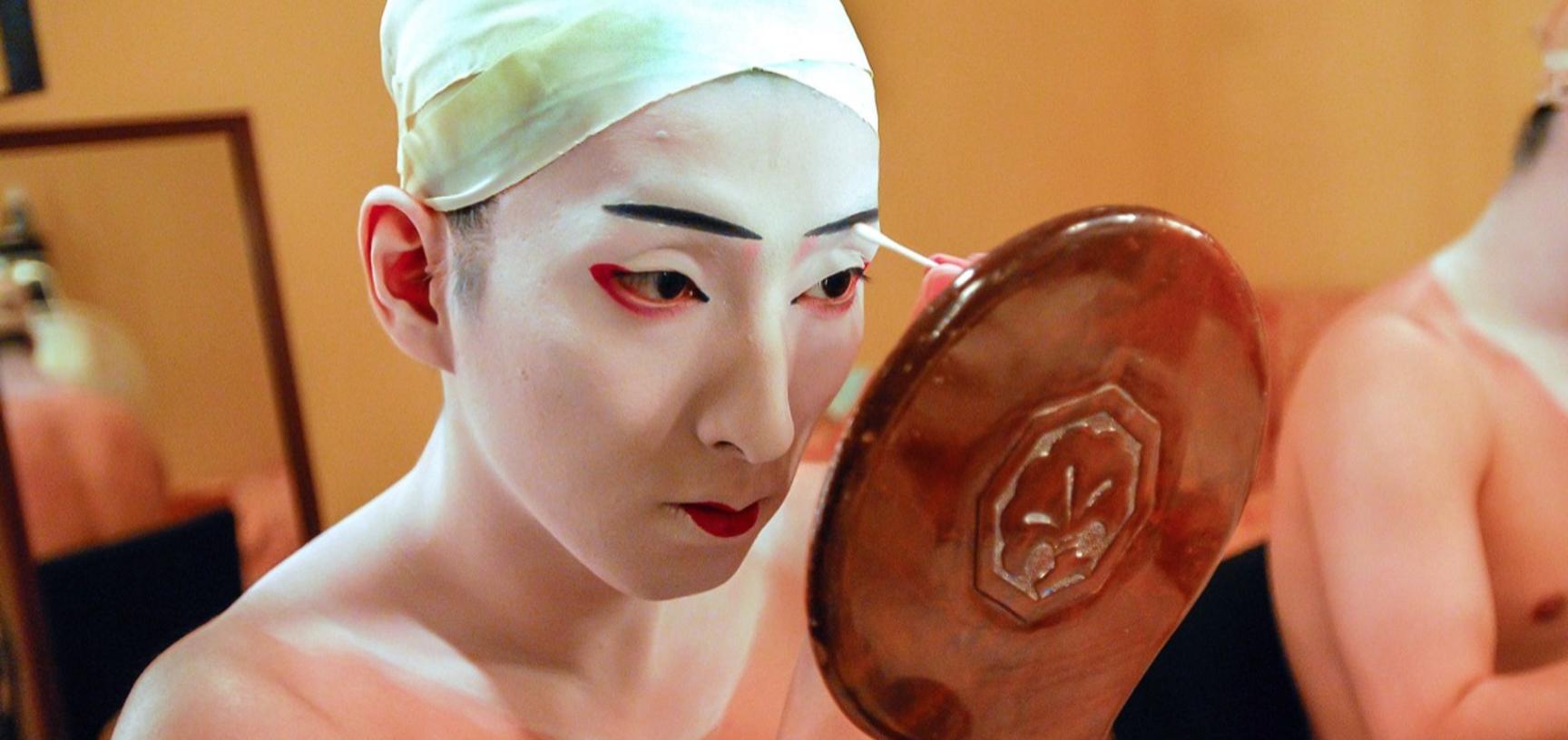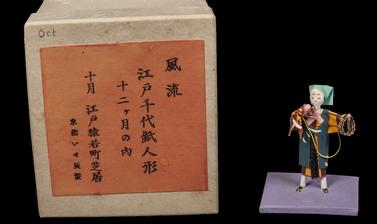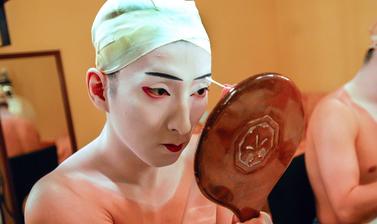beyond-the-binary/MatthewScott
The Beyond the Binary exhibition brings together the diverse perspectives of LGBTQ+ researchers, artists and community activists to create space for self-representation in the museum.
Matthew Scott (Beyond the Binary community curator) explores Kabuki, a traditional form of Japanese Theatre.
Kabuki
Kabuki was popular with the masses in the Tokugawa era (1615-1868). Troupes adapted material from traditional nōh theatre, contemporary subjects and folk tales. They gave exaggerated performances using vibrant costumes, song and dance, not unlike 19th century music hall or pantomime. The name for this form of theatre came from the verb kabuku, which means ‘to be unusual or out of the ordinary’ and was sometimes used in the 17th century to allude to sexual debauchery. Kabukimono was an expression for someone who was bizarrely dressed.
The founding of Kabuki and Onnagata
The founding of kabuki is widely credited to a woman known as Okuni, believed to have been a former miko (shrine-maiden) to the Shinto shrine in Izumo. In the early 1600s, Okuni led a troupe of women, many of whom worked in prostitution, and trained them to sing and perform traditional folk dance. They acted in farcical skits, portraying encounters between men and prostitutes or the secret meetings of lovers in teahouses and bathhouses.
Okuni’s actresses performed both male and female roles. However, as other troupes emulated her shows, they employed male actors to assume female roles. Such actors came to be known as onnagata and were key players in kabuki theatre. They highlight a view in traditional Japanese society where gender is separable from biological sex, perceiving femininity as an action that can be performed.
Government repression
Kabuki theatre adapted to a chequered history of repression by the Tokugawa Shogunate (the military government of Japan), who regarded it with suspicion and feared its influence over the masses. They deemed it ‘immoral’ and passed laws that prevented actors associating with members of other social classes. This is because it was common for wealthy clients, including samurai, to hire male and female kabuki actors as prostitutes. The Shogunate also believed in a strict social hierarchy. As lower-class actors gained prominence, they mixed with members of the aristocratic elite, and the government feared the disruption of social and political order.
Wakushu
Laws were passed that banned women from performing in theatre in 1629 (due to samurai rivalry over actors). Afterwards, adolescent males assumed the role of female characters on stage, resulting in a popular form of theatre called wakushu-kabuki (young men’s kabuki). The actors were usually effeminate and long-haired and went to great lengths to make themselves attractive to men and women alike, with wakushu sometimes referred to as ‘the third gender’. Homosexuality was commonly accepted in Japan until the late 1800s and the young male actors were considered an object of desire for women and men.
City officials banned male prostitution in 1648 due to the passions aroused by wakushu actors and conflicts between those seeking their favours. In 1652, wakushu-kabuki was banned altogether. However, theatres reopened later that year following negotiations between theatre operators and the authorities, with bans on wakushu and onnagata lifted. However, strict rules stated that no young actor over 14 years could wear girl’s clothing or hair styles and must have a shaven forelock. Older actors were increasingly relied on to play onnagata based on their ability rather than appearance, and kabuki evolved from burlesque to a more serious art form.
Matthew Scott (Beyond the Binary community curator)
Bibliography
- Brandon, J.R. and Malm, W.P., 1978. Studies in Kabuki: Its Acting, Music and Historical Context. Honolulu: The University Press of Hawaii.
- Buruma, I., 2017. The ‘Indescribable Fragrance’ of Youths. The New York Review of Books, [online] 11 May.
Available at: https://www.nybooks.com/articles/2017/05/11/japanese-edo-indescribable-f... - Encyclopaedia Britannica. "Okuni | Kabuki dancer".
- Ernst, E., 1974. The Kabuki Theatre. 2nd ed. Honolulu: The University Press of Hawaii.
- Isaka, M., 2016. Onnagata: A Labyrinth of Gendering in Kabuki Theater. Seattle: University of Washington Press.
Thanks to the National Lottery Heritage Fund for their generous support











